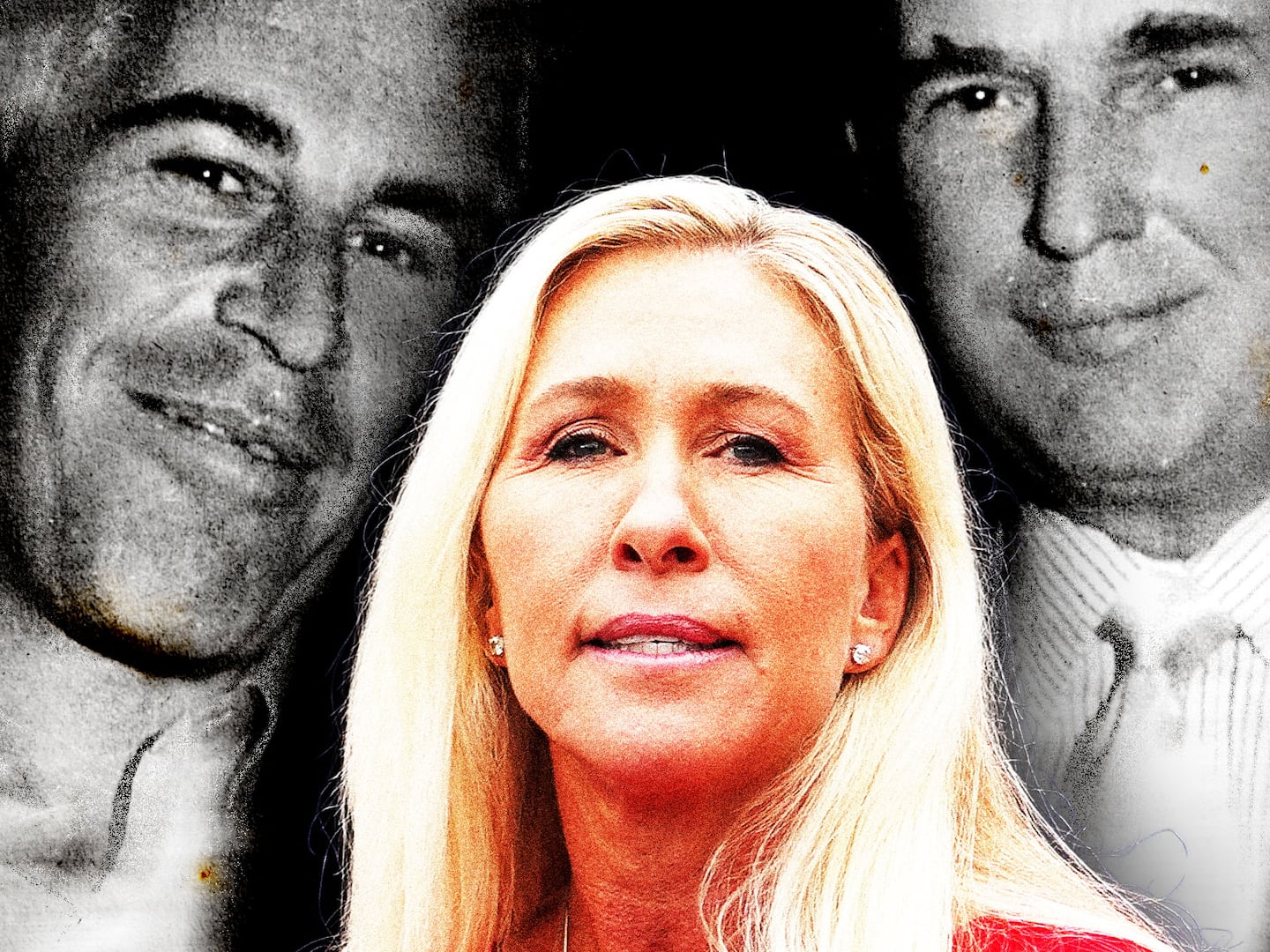When Samantha Ellis’s great-grandmother was 14, her eyesight began troubling her. Too much reading was the diagnosis, so she was taken out of school for fear she’d never find a husband if her condition continued to worsen. “Relatives kept telling me this story in a slightly pointed way as I peered at them over a book,” Ellis recollects, thinking back to her own childhood in North London when I meet her to discuss her book How to Be a Heroine: Or, What I Learned From Reading Too Much, “and I couldn’t help but think, do they mean me?”
Bar her grandfather, a doctor in Baghdad with a passion for history, Ellis was the only bibliophile in her family. Not surprising really when you consider that English wasn’t her parents’ first language—they were Iraqi-Jewish political refugees. As such, Ellis grew up in the small, tight-knit London Iraqi-Jewish community within which the expectation for women was that they would marry young and have children rather than careers. Ellis, however, wanted something more from life, “something different” she explains.
As a successful journalist, playwright, and now author, Ellis certainly forged a path different to that of most of the women around her while she was growing up. But quite how and why her life took the direction it had done, she couldn’t put her finger on until she sat down and mapped the choices she’d made against those of the literary heroines who’d inspired her along the way.
From Hans Christian Andersen’s Little Mermaid, through Little Women’s headstrong Jo March, Sylvia Plath’s damaged alter ego Esther Greenwood, Cold Comfort Farm’s practical Flora Poste, Forster’s romantic Lucy Honeychurch, and Salinger’s mysterious Franny Glass, to name but a few—How to Be a Heroine is a meditative trip down memory lane, and a love letter to the books that Ellis identifies as having helped shape the woman she is today.
Fittingly, the project arose out of what turned out to be a revelatory heroine-off between Ellis and her best friend as they roamed England’s Brontë country. Ellis was arguing in favor of “passionate, headstrong—and gorgeous” Cathy Earnshaw from Emily Brontë’s Wuthering Heights, a heroine she’d been trying to emulate for years, while her friend put forward the case for Charlotte’s “stoic, virtuous, plain” Jane Eyre.
With cinematic timing, just as they reach Top Withens—the ruined farmhouse often considered something of a template for the fictional Wuthering Heights—Ellis realizes the error of her ways. Cathy is wrapped up in romance, but she’s also miserable and wild, meanwhile Jane is independent, brave, and clever, and, most importantly, “while Cathy ends up a wandering ghost, Jane ends up happily married”: “My whole life, I’d been trying to be Cathy, when I should have been trying to be Jane.”

Back home in London, she dug out her much-thumbed copies of the novels and re-read them, “with more scrutiny and less sentiment,” realizing that yes, Jane was a much more valiant and worthy heroine that she’d previously thought. But she didn’t stop there. Over the next 18 months she returned to the novels of her past with fresh eyes, re-reading longtime favorites, and discovering neglected classics for the first time.
Some novels didn’t stand the test of time. She’d loved L. M. Montgomery’s Anne of Green Gables series as a child, but now found herself annoyed by the fact the author has Anne give up her writing once she and Gilbert Blythe are happily married; instead, she finds a much more optimistic portrait of female creativity in the heroine of Montgomery’s Emily books.
Jacqueline Susann’s 1966 bestseller Valley of the Dolls also disappointed. Despite the fact Ellis had been obsessed with Susann’s portraits of women at work when she’d first read it during her twenties—at a time when Ellis was focusing on her career—she found the story “so bleak” the second time around: “The women aren’t really career women,” she explains, “they’re all just in search of husbands so they can stop working.” But then she discovered the career-obsessed heroines she was looking for in Shirley Conran’s Lace. It might have the reputation of being a bonkbuster, but it’s also a career woman’s handbook: “All her protagonists love work.”
Other stories presented her with something very different from what she thought she’d learned from them first time round. Returning to The Little Mermaid, she realized that part of the allure it had for her as a child had to be Andersen’s evocative portrait of a heroine “caught between two worlds.” Although she’d never been there herself—and still hasn’t made the journey—Ellis grew up homesick for the Baghdad she heard about in the stories told by family members all round her.
Then there’s the notorious Cathy. She may well have misled Ellis about love—“Trying to be her had led me to the wrong man again and again; trying to go out with Heathcliff is very unwise!”—but she had taught her to be bold.
“At the time I was this chubby, awkward, anxious teenager. Maybe I needed an angry, passionate heroine to pull me out of myself,” she admits.
On first glance, How to Be a Heroine is another example of the increasingly popular bibliomemoir genre, but as Ellis is quick to point out when we’re chatting, it’s “more about character, than reading and books.”
“I’ve always read for companionship,” she explains. “I love meeting new people in books.”
This is a preference that also informs her work as a playwright. “I’m more of a character writer than a plot writer,” she says, mulling it over. “I write character-driven plays.”
And female characters specifically, I ask?
Absolutely, she tells me. Joseph Campbell’s storytelling bible The Hero With a Thousand Faces looms over scriptwriting, but she takes issue with his claim that female characters don’t need to make the same journeys as their male counterparts.
“I’ve always felt very strongly that we do. So I was interested in finding out what a heroine’s journey looked like.”
The book was also an opportunity to explore the very definition of a heroine, and why it’s potentially a more loaded term than hero.
“I don’t like the idea of dividing characters into heroines and anti-heroines, because then you start thinking of good girls vs. bad girls. People are much more likely to lump all male protagonists together and not worry about whether they’re good role models or not, or whether they’re likable or unlikeable. Take Scarlett O’Hara, for example. She’s often called an anti-heroine, and never a role model, but I learnt loads from her. I needed to be very tough to persuade my parents to let me leave home and go to university and I needed Scarlett then. She was incredibly helpful to me at that point.”
In many ways the feminist aspect of How to Be a Heroine can be linked to what one might describe as a larger project that drives much of Ellis’ creative work. She’s the founder of the women’s theatre company Agent 160, and is passionate about advocating for better and more roles for women on stage and screen, especially older women, and a healthier gender balance both onstage and behind the scenes.
“I was strongly feminist in my late teens, but then in my twenties I got a bit complacent and thought everything was all right since I was as successful as my male peers. But then they started making big leaps that I wasn’t, and I became very upset by it in my late twenties and early thirties, and as a consequence I re-discovered my feminism,” she explains, describing a psychological journey I expect will ring true with many women.
She’s currently writing a book about Anne Brontë—the least well known of the sisters, but, in Ellis’s opinion, “the more overtly feminist of the three.”
“She broke a lot of new ground,” Ellis explains. “Agnes Grey has a first-person narrator—a governess who addresses the reader directly. Even if Jane Eyre is arguably a better novel, Anne got there first. And Helen, the heroine of The Tenant of Wildfell Hall, is an extraordinary woman. She leaves her abusive, alcoholic husband in order to protect their son from him, and supports herself with her painting. It’s an incredibly modern story.”
More than anything else, what she looks for in a heroine is agency. “I’m interested in women who drive the action,” she confirms. Writing How to Be a Heroine allowed her to both come to this revelation in terms of her literary tastes, but perhaps more importantly, also in terms of the trajectory of her own life. Although it lacks the laying oneself bare that typifies the most confessional memoirs being published today, she definitely acknowledges that writing the book was akin to a form of therapy.
“Now I have a clear narrative of my life, which I didn’t before,” she explains. “And knowing where I’d come from made me think very clearly about where I was going.”






